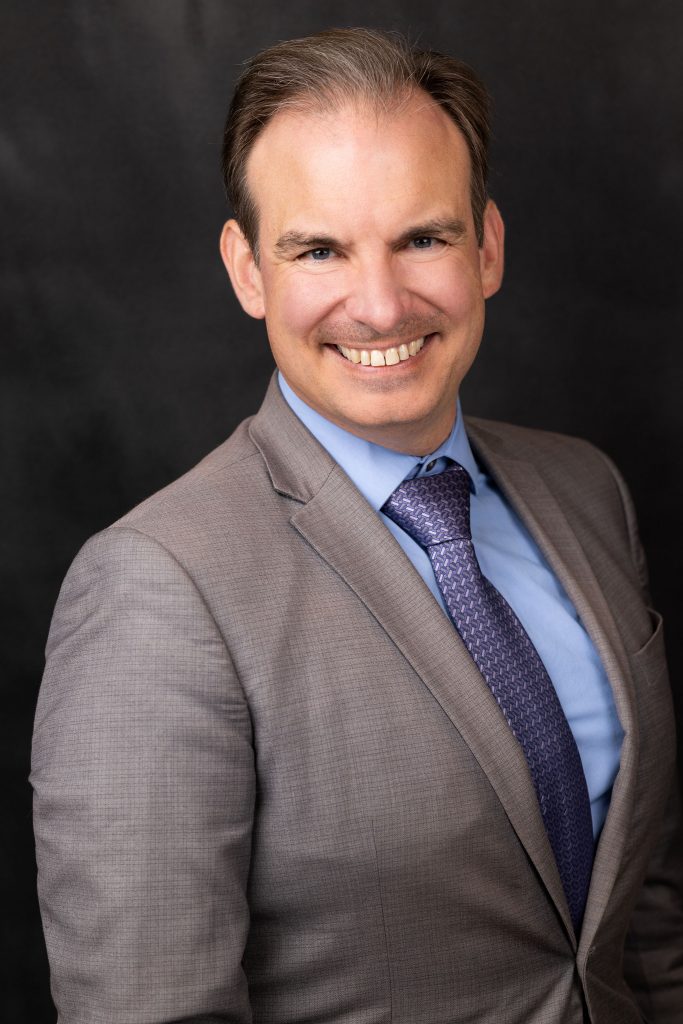

Stephen completed his PhD at the University of Wisconsin-Madison, searching for the rare decay of a particle called a “B meson” (made from a bottom quark and an up quark) into a tau lepton and its partner neutrino. He then served in post-doctoral positions at MIT and later Ohio State University. A common theme of his work throughout this period was enhancing sensitivity to rare phenomena, culminating in 2008 in the discovery of the long-sought ground state of bottomonium, the simplest bottom-quark system.
He accepted a faculty position at Southern Methodist University in Dallas, Texas, in 2009. At SMU, he joined the ATLAS Experiment at the Large Hadron Collider and contributed in 2012 to the study of the newly discovered Higgs boson’s fundamental quantum properties. He then contributed to the discovery of the Higgs particle’s direct interaction with bottom quarks in 2018. He trained and graduated five PhD students during this period. He served as SMU’s Director of Graduate Studies in Physics in 2019 and then as Physics Department Chair from 2020-2021. He is now also a Professor of Physics at Queen’s University.
As Research Group Manager at SNOLAB, Stephen collaborates with and mentors the research scientists to advance the scientific mission of the lab and the goals of the broader community. In addition, he collaborates with colleagues at SNOLAB to ensure that scientific information is available for communication to a variety of audiences. An important aspect of both activities is engagement with the SNOLAB user community, who are key drivers of the science program and projects. All this work requires communication and coordination utilizing a variety of media, as well as involvement in the diverse SNOLAB research program, interactions across all levels of the lab, and engagement with its national and international communities.
See Dr. Sekula’s Research Group Manager profile here
How would you describe your work in simple terms?
I use and study space, time, energy, and matter to determine the story of the universe, including its origin, structure, and possible fates. I am part tinkerer, part computer programmer, part writer, part explorer, part mathematician, and part artist. All of this is needed to understand the cosmos.
What is something in your career you are especially proud of?
I know I am supposed to talk about the Higgs particle here, but in this case the thing I am most proud of is the discovery that just preceded it in my career: that of the ground state of bottomonium. Every material system made from smaller things has a lowest energy configuration, or ‘ground state’. The ground state of a bound pair of bottom quarks, second-heaviest building block of nature, had eluded discovery since the bottom quark was first identified in 1977. It was a discovery waiting for the right time with the right tools.
In 2008, the BaBar Experiment faced an early end to its original program and pivoted instead to collect data that could enable the discovery of the bottomonium ground state. I am proud to have helped organize and lead the team of outstanding physicists who helped secure the data, even operating over some major holidays (a first for us) to do so; analyzed the data; challenged themselves at every assumption to ensure no one was fooled; and then unveiled a definitive discovery of this material state. For me, this complete assembly of vision, planning, hard work, dedication, sweat, and then joy set the stage to participate in the much greater and more challenging effort to discover the Higgs particle. I also love ‘off-label’ uses of experiments, and the pivot we made to achieve this goal brought special joy.
Why did you choose physics?
I thought I was going to be a writer. I discovered physics through a pleasant conspiracy of events. First, I had a great physics teacher who only taught at my public high school for the four years of my secondary education; he ran a senior-level physics course and a first-year-level combined physics and chemistry course … not common in the U.S.! I had great parents who encouraged depth in my interests. This was kindled into a love for physics when my father showed me a documentary by the science writer, Timothy Ferris, entitled “The Creation of the Universe.” This became my first introduction to particle physics, mathematics’ ability to describe and predict reality, and connections between the cosmic and the subatomic. This included understanding the birth, structure, and possible fates of the entire universe. I was sold.
What is something about you that might surprise people?
I had to give this up while I was a faculty member at SMU, but I have been a drummer … including in a local blues band in Connecticut back in the 90s. I love drumming and I especially love the music made by drummers, be they Neil Peart (you are missed, my departed inspiration) or the artists in a Balinese Gamelan.
Publications
Contact details
T +1 (705) 692-7000 ext. 2237